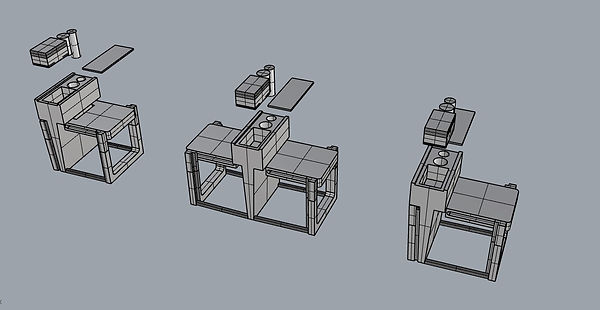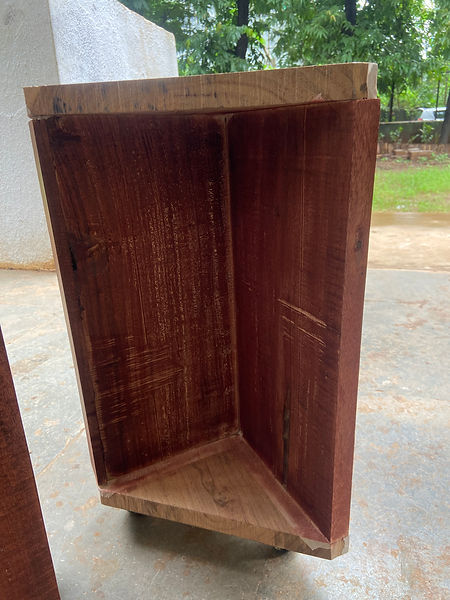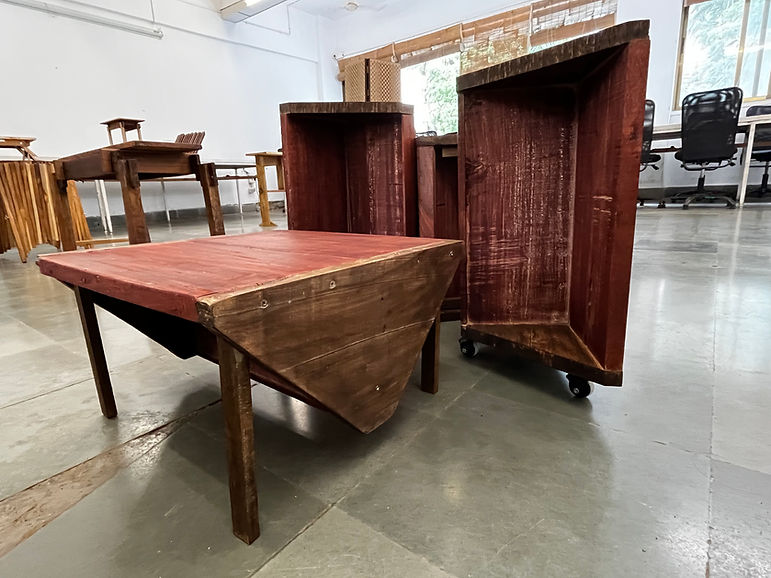
THE NEw
P E R S P E C T I V E

ALLIED COARSE
RUSTIC WOODS : WOOD WORKING
The WoodWorking course was more than an introduction to carpentry—it was an immersive exercise in understanding material intelligence, construction logic, and design precision. Centered around the design and fabrication of foldable wooden objects, the course invited to engage with timber not merely as a building material, but as a responsive, living entity with its own character, constraints, and potential.
The journey began with a field visit to the Vasai wood mill, where I traced the lifecycle of timber—from log to lumber. Observing the diverse range of wood types, understanding their mechanical properties, and gaining insights into procurement and grading practices laid the foundation for material sensibility. This direct exposure helped to make informed decisions about wood selection, durability, and sustainability in our designs.
Back in the studio, the translation from observation to ideation took form through a series of iterative drawings and scaled prototypes. These preliminary explorations were critical in understanding the foldability mechanisms and structural behavior of the design. Each decision—whether related to grain direction, joint placement, or hinge articulation—was guided by both technical reasoning and aesthetic clarity.
During designing there were many design iterations which were created of different objects one of which was taken ahead was the design of a coffee table and a small movable poofy Stool. These pieces of furniture were made with Akashia Wood. It is a hardwood and was quite challenging to work with but had an excellent end result. The design consisted of two coffee tables which could also be used as seeds and two poofy stools. All of the pieces were cut and were bought together with different joineries and screwing all of the pieces together. For the finishing I decided to give it a rustic look asking myself a question of how can a wooden element rust or rather wood rust. This led me to the exploration of various wooden stains whereby reducing the sanding process of food and applying the stain as is the results into a rough raw and unfinished texture which look like an antique, a new but old furniture with a rustic appearance to it. The main motto of my design was to be honest with the chosen wood in order to maintain its true nature without modifying it much and having an irregular look to it Just like the wood which is found in nature untouched and irregular. The end result was a rustic coffee table and seating which talked about the aged nature of the wood used and how a wood colud rust.
The workshop phase demanded a different kind of rigor. Working with full-scale timber elements brought forth the realities of warping, surface inconsistencies, and the unforgiving nature of precision cuts. Joinery, often romanticized in theory, became a test of patience and perseverance in practice. Every misalignment and every flawed joint became a learning moment, revealing the delicate balance between tools, material, and human intent.
This course did not merely culminate in a finished product; it offered a profound appreciation of process. It taught that design does not end at the drawing board. It evolves—through splinters, recalibrations, and fine-tuning—into something that stands, folds, and functions in real space.
It was an encounter that reshaped the way I approach making—not as a separate phase from thinking, but as an integral extension of it. In bridging concept and construction, this studio reinforced one of architecture’s most essential truths: that the act of building is itself a form of learning.
CONCEPTUALIZATION







PROCESS



















THE RESULT




